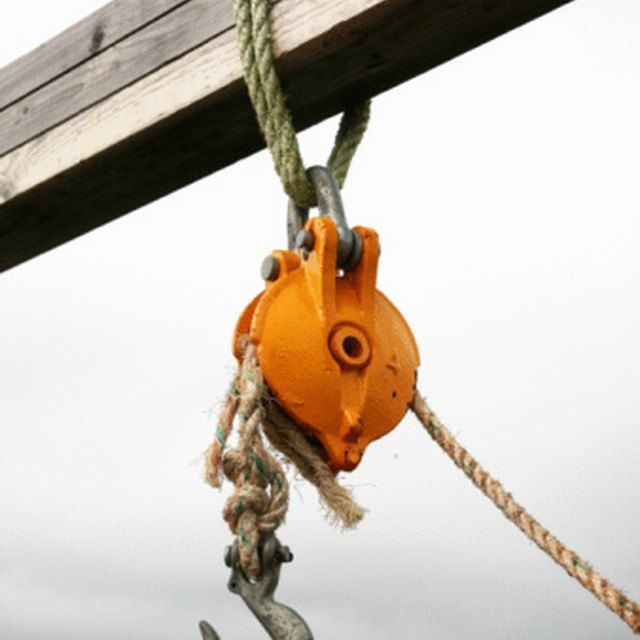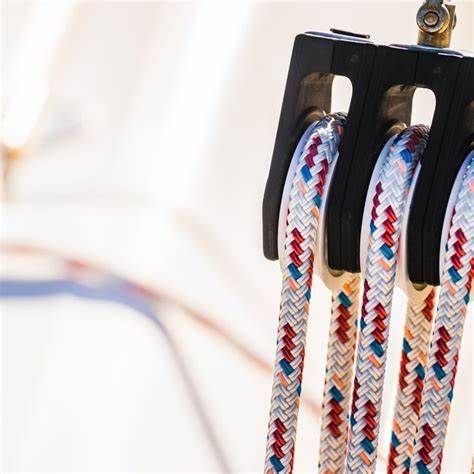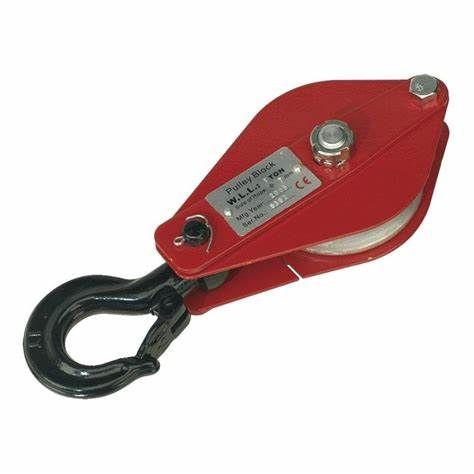1410, PARKSON, 44-60 ZHONGSHAN ROAD, QINGDAO, CHINA
What is Pulley?
It is a simple wooden or metallic machine that uses a wheel and rope to lift heavy loads. Nowadays, plastic pulleys are also available in the market to carry small loads. This can be rotated freely about an axis passing through its center. It can change the direction of a force which makes it much easier for people to lift anything. With this, you can pull down on one end to lift the 10 kgs and one-meter high object.
A pulley is a simple machine that was designed in ancient times, but is still the basis of much modern machinery. It is essentially a wheel through which a rope or other cord is wound. One end of the rope is usually anchored to a weight or other load, and when the free end is pulled — usually by a person, but possibly also by a machine — the wheel changes the direction of the applied force and makes it much simpler to lift the attached weight. This type of tool comes in a number of different sizes and specific varieties, but in almost all cases the goal is the same, namely, to make lifting heavy objects easier and to more efficiently channel energy.
Engineers generally talk about “simple machines” in six different categories: inclined planes, levers, screws, wedges, wheel and axels, and pulleys. All are made of basic, everyday components and all make humans’ work simpler in one way or another. Pulleys are usually most concerned with lifting and moving large objects.
In its most basic form, this tool consists of little more than a wheel with a groove. A rope, belt, or cable runs inside the groove. That mechanism can be used alone or connected with others in a pulley system. The greater the number of pulleys in the system, the less force it will take to lift the object.

Types of Pulley
Fixed Pulley
When the block of the pulley is fixed on a high platform, it is known as fixed. An extensible string passes over the groove where its one end is attached to the body to be lifted while the other end is free.
Movable Pulley
When the block of the pulley is not fixed but carries the load, it is known as Movable. An inextensible string is tied around the groove where its one end is fixed to fixed support while the other end is kept free to apply the effort. As the effort is applied, the block together with the load moves upward.

Types of System
Pulleys are common in cranes.
There are three basic types of system: (1) fixed, with a fixed axle; (2) movable, with a free axle;and (3) compound, with a combination of fixed and movable axles Movable and compound axles, by multiplying the force, tend to be more efficient than fixed systems.
Wheel-and-rope tools can also be used in combination with other tools for more specific purposes. The so-called “belt and pulley system” is one example. These tend to be “closed” systems in which several grooved wheels are connected by one circular, connected belt, and are designed for the transmission and amplification of energy rather than straight lifting power.

Lifting Advantage
Pulleys often have a groove around their circumference that guides a chain, cable, belt or rope.
One of the biggest benefits of this type of machine is the ability to move heavy objects and channel lifting energy without exerting much force. In general, the heavier the object the more force a person must exert to move it. Channeling that energy up a rope and around a wheel — or series of wheels, depending on the weight of the object &madash; can make the overall exertion, which is commonly known as “lifting advantage,” much more efficient.

For example, a person will typically need to exert about 10 pounds (4.5 kilograms) of force to lift a 10-pound (4.5-kg) weight, and in most cases that force will need to be applied in a straight upwards motion. If the weight is attached to a pulley, the person will still need to exert the same amount of measured force, but the direction it needs to be exerted in changes. Once attached to the rope system, the person must pull down rather than lift up. This makes more efficient use of the individual’s body weight and exertion.
The more wheels there are in a given system, the more efficient it’s likely to be. If the weight is attached to two systems, for instance, the person will need to exert only 5 pounds (2.26 kg) of force. Four will require 2.5 (1.13 kg) pounds of force, and so on.
Common Examples
These tools can be found in many modern day settings. Elevators are perhaps one of the most common: though they aren’t seen on the outside, large systems of spinning wheels and cables help the cars move up and down. In most cases these are controlled by computers and are lifted through mechanical means rather than manpower, but the efficiency is the same. Many car engines also depend on belted systems to help shuttle energy from the engine to the wheel shafts and other moving parts. Sailboats frequently use them to control tension in the sails, and they're common in cranes and other machinery, too.
Many pulley removal tools also double as installation tools, making the tool capable of performing two functions for the cost of a single tool. There are several different styles and types of pulley removal tools, from the jaw-style and pickle fork-type tools to threaded rod or bolt-type removers. The type of pulley removal tool required to remove any given pulley is determined by the type and size of the pulley requiring removal. While many pulley removers are capable of being used successfully on many different sizes and types of pulleys, there are some pullers designed to work exclusively on one individual type and size pulley and occasionally on a single manufacturer's brand such as Ford or General Motors pulleys, for example.

Learning more hook information, pls click below:
https://www.huahanmachinery.com/product/pulley-block.html